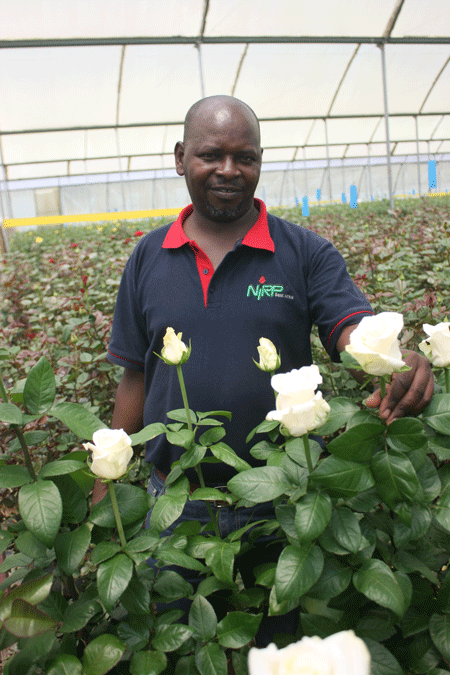
Understanding the Science behind breeding & selection of Roses
Kenya is the lead exporter of roses to the European Union (EU), with a market share of about 38%. According to Union Fleurs, the Country supplies one third of all roses in the EU markets contributing around one percent of the country’s GDP. Hortfresh Journal features how flower farms arrive at the best varieties for the market, at New International Rose Producers (NIRP) East Africa, one of the companies in Kenya that is leading in research, breeding, selection and marketing of new rose varieties.
Traditionally most of the flower varieties grown in Kenya were being imported from Holland, Colombia or Israel. Most of these varieties could not withstand the local tropical climate and therefore performed poorly.
According to Ethan Chege Gathioro NIRP East Africa Technical manager, the aim of the breeding program is not only creating more of the English rose varieties, but also to identify good lines, which reliably pass on desirable characteristics to their off-springs.
The diversity of roses used in the English rose breeding pool help to create great varieties in their off-springs. A large collection of old, species and modern roses are used together with the best parent plants.
“Breeding is a scientific process which starts with selection of the parent with the superior qualities. Through crossbreeding, pollen grains of different rose flowers are ‘married’ to produce a new plant breed that has the combination of the qualities of the parent plants.
When preparing ‘the mothers’ and ‘the fathers,’ the flower must be mature enough. All roses have both the male and the female parts. The male part of the flower which has got the pollen grains are removed just before the female is ripe to be sure that the female has not been fertilized,” says Chege who is also a senior flower breeder at the firm, while explaining the delicate process of breeding a new rose variety.
The successful crosses will fall ripe, palp and orange or red hips. The hips are then harvested and labelled with each precious seed carefully removed, undergoes a period of cold treatment before planting. Several field trials are conducted to highlight the seedlings with outstanding performance year after year to merge the beauty of their flowers. The breeding and selection process of rose flower takes a minimum of five years from pollination to the market. The seedlings are budded into a high quality rootstalk and assessed in the next seasons. The ones which indicate promising results are multiplied by further budding each year, meaning that each potential new variety can be assessed in large quantities.
“We multiply artificially, from one plant to seven plants which is the next level. If it is not good, it is discarded at that stage,” says Chege
Each grower needs to understand his farms climatic condition, altitude, his or her market segment among other factors and we will bring forth a breed that is resilient,” he said.
Before the variety is availed to the market, it will have to undergo intensive research. “There is a team of botanists, agronomists, team with a lot of market experience who make sure that only the most suitable brand is brought to the clients,” he said.
Through dedication and hard work, the company has invested time and money in breeding activities. This has resulted in development of many varieties that adopt very well to the local climatic conditions, fetching fortune to many growers.
NIRP East Africa produces several rose varieties every year and it is from this bulk that the ‘best fit’ varieties are selected.
This way, breeding companies like NIRP East Africa have not only managed to give Kenyan rose growers a chance to cultivate what is favourable to their climate but also an opportunity to set their own identity in an increasingly competitive market.
The growers have the prerogative to grow the flowers that can withstand the climatic conditions at their home area besides the breeds which are acceptable in their target markets. Getting the new varieties depend on mutual agreement between the company and the grower
By Malachi Motano


